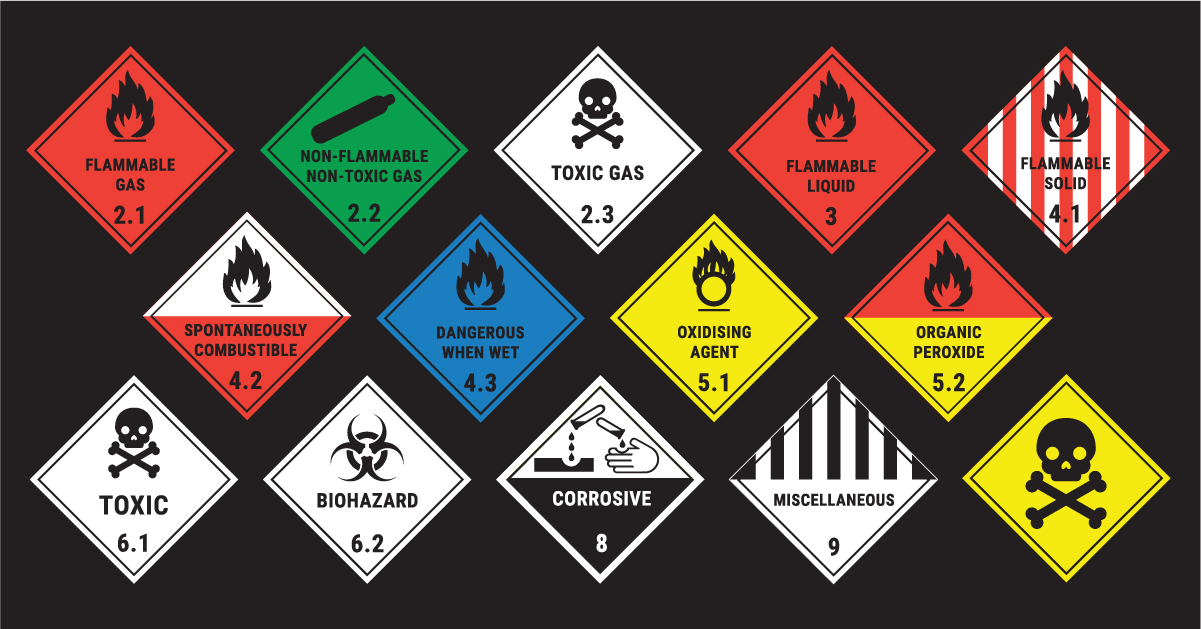Minimising Risk, Maximising Safety
Know your Hazardous Substances

Know your Hazardous Substances

Understanding Hazardous Waste Symbols: What You Need to Know
When dealing with waste—especially in industries, laboratories, or even at home—understanding hazardous waste symbols is crucial for ensuring safety and environmental responsibility. These symbols, often found on labels and containers, help communicate the potential dangers of a substance and guide safe handling, storage, and disposal.
The UK follows the Globally Harmonised System (GHS) for the classification and labelling of chemicals, which has been integrated into UK REACH post-Brexit. GHS uses standard pictograms—diamond-shaped symbols with red borders—that indicate the nature of the hazard.
Common Hazardous Waste Symbols and What They Mean
Explosive
Symbol: An exploding bomb
Indicates: Materials that may explode under heat or pressure. Common in laboratories and certain manufacturing processes.
Examples: Fireworks, ammunition, or unstable chemical compounds.
Flammable
Symbol: A flame
Indicates: Substances that easily catch fire when exposed to heat, sparks, or flames.
Examples: Petrol, ethanol, or paint thinners.
Oxidising
Symbol: A flame over a circle
Indicates: Chemicals that release oxygen and may intensify fires.
Examples: Hydrogen peroxide, nitrates, or potassium permanganate.
Corrosive
Symbol: Test tubes pouring liquid on a hand and a surface
Indicates: Substances that can destroy living tissue or corrode materials like metal.
Examples: Acids (e.g. hydrochloric acid) or alkalis (e.g. sodium hydroxide).
Toxic
Symbol: Skull and crossbones
Indicates: Substances that can cause death or serious health effects when inhaled, swallowed, or absorbed.
Examples: Pesticides, cyanide, or methanol.
Health Hazard
Symbol: A silhouette of a person with a starburst on the chest
Indicates: Long-term health effects such as cancer, respiratory issues, or reproductive toxicity.
Examples: Asbestos, benzene, or formaldehyde.
Harmful/Irritant
Symbol: An exclamation mark
Indicates: Substances that may cause irritation, allergic reactions, or drowsiness and dizziness.
Examples: Cleaning agents, some solvents.
Environmental Hazard
Symbol: A dead tree and fish
Indicates: Chemicals that are harmful to aquatic life and ecosystems.
Examples: Certain oils, pesticides, or heavy metals.
Best Practices for Handling Hazardous Waste
Read labels carefully: Always check for hazard symbols before using or disposing of any substance.
Use proper containers: Store hazardous waste in clearly labelled, appropriate containers to prevent leaks and contamination.
Wear protective equipment: Use gloves, goggles, and protective clothing to avoid contact with harmful substances.
Follow regulations: Refer to your local council or a licensed waste disposal service for guidance on safe and legal disposal.
Educate others: Make sure employees, students, or household members understand these symbols and how to act accordingly.
Final Thoughts
Hazardous waste symbols are an essential part of health and safety practices. Recognising and understanding these symbols helps prevent accidents, ensures legal compliance, and protects the environment.
Whether you’re working in a lab, running a business, or tackling a home improvement project, always treat unknown materials with caution and respect the warnings on their labels. Safety starts with awareness.